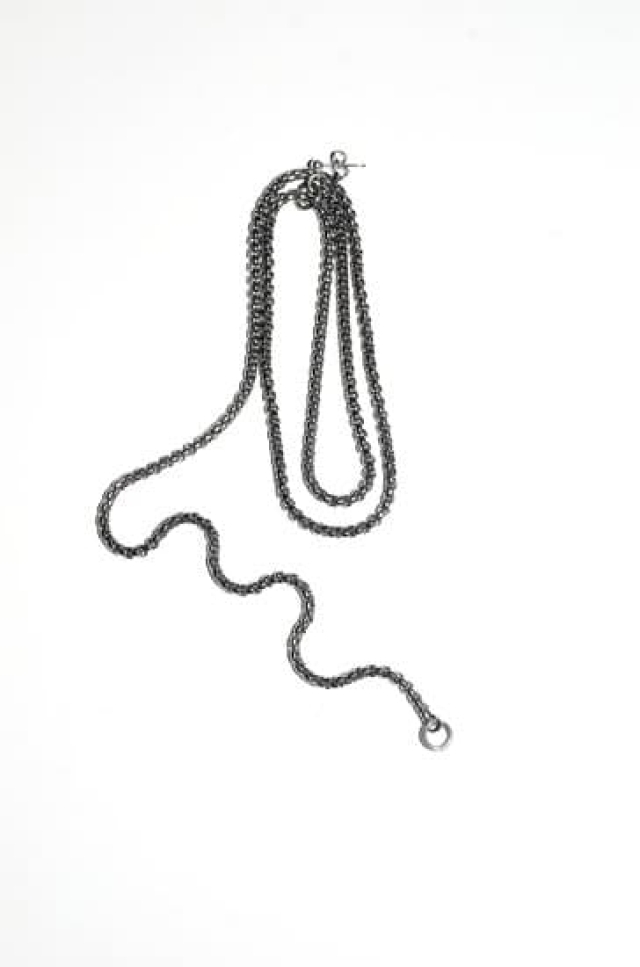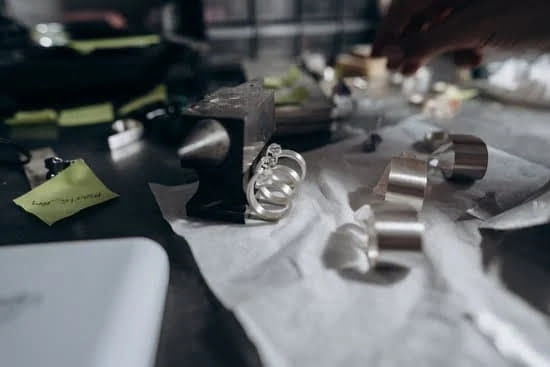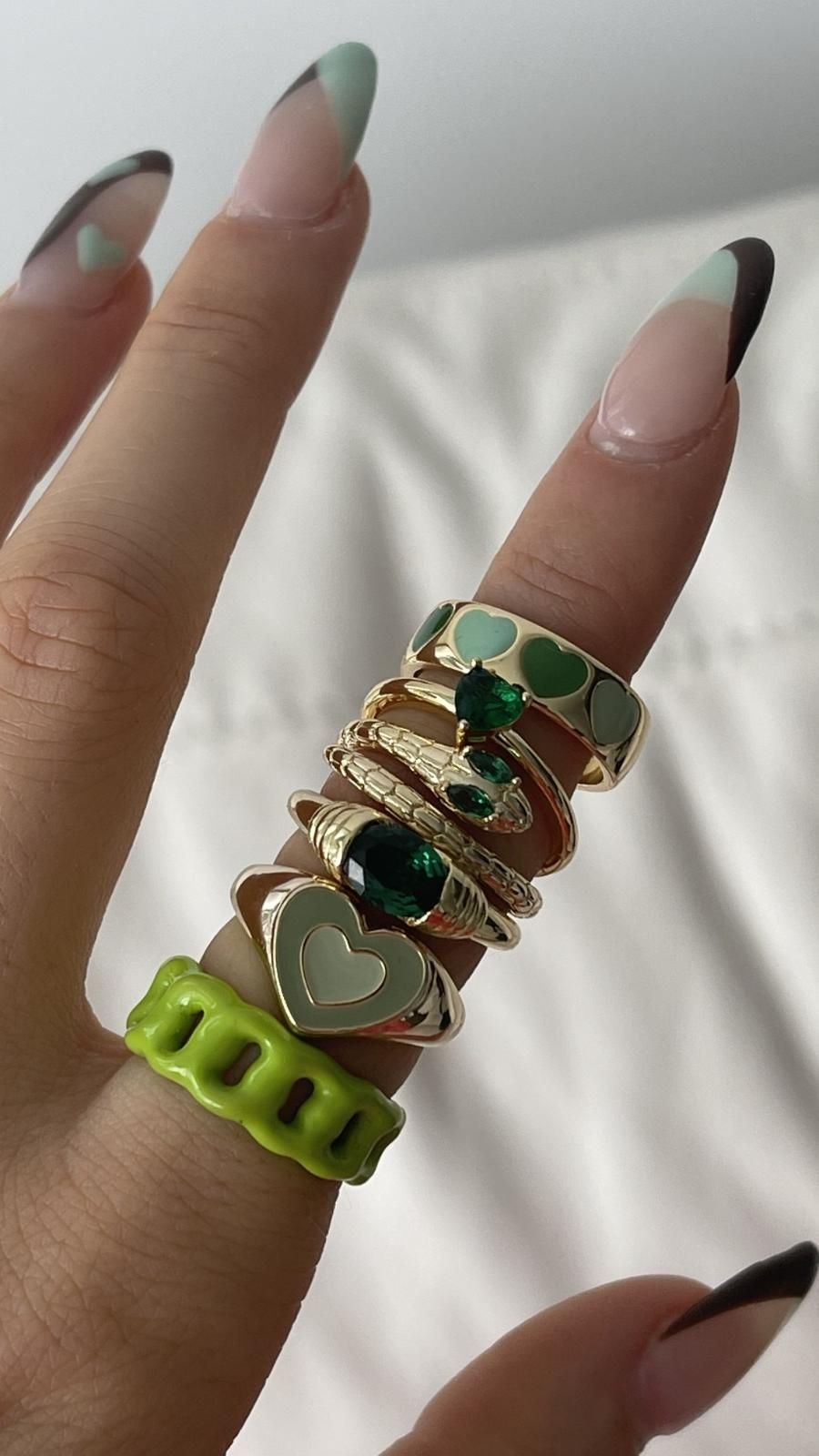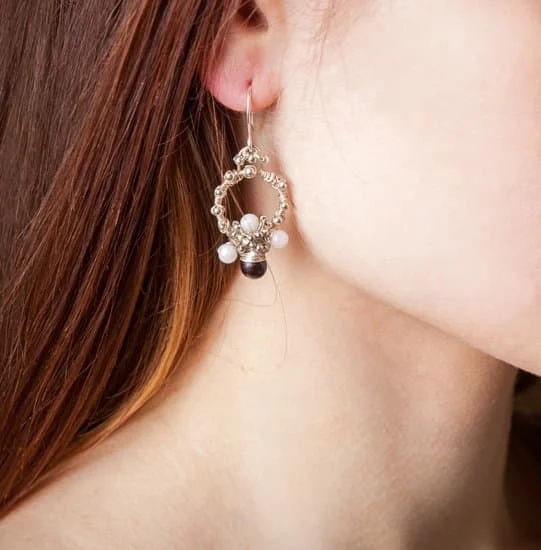Material for jewelry is an important consideration when creating any accessory. Different materials offer a variety of unique characteristics that can shape the aesthetic of the finished product. Artisans and jewelry designers rely on quality materials to craft high-end pieces as well as more basic jewelry. From gems and metals to synthetic resins and fiber cords, many options exist depending on one’s preferences.
The most commonly used material for jewelry making is metal. Gold, sterling silver, copper, brass, and bronze are some of the most popular types of metals used in jewelry production. Choosing these metals allows artisans to incorporate various finishes into their designs such as oxidation, brush finishing, hammered texture, and polishing.
Smaller details can be added through intricate engraving or custom stamped marks with special messages or logos. Additionally, gold plating offers a way to give accessories a flashy look at a lower cost than genuine gold products.
Semi-precious gemstones are another option that many people use in their jewelry making endeavors. Popular varieties include opalite, agate, turquoise, onyx, quartz crystal, jasper and tiger eye.
These natural stones lend each piece a unique characteristic due to their diverse properties such as color tones and clarity ranging from opaque to translucent to completely clear stones. Different shapes from tapered cut stones to ornamental cabochons also add elements of interest to a design with varying textures like rough surfaces or glossy polish finishes available depending on the stone type chosen.
Pearls may be thought as classic but they offer timeless touches when integrated into accessories too. Freshwater and saltwater pearls come in shades like white cream or black with various sizes suitable for different ages and styles alike.
Natural pearls have no uniformity but cultured pearl beads created with oyster farming may be more consistent in shape and size compared with individual natural pearls found in nature which means they look better suited for carefully designed crafts than free form items like necklaces or rings made from individual non-cultured pearls selected according to size etc.
Natural Materials Used in Jewelry Making
In the world of jewelry making, natural materials provide more than just a unique look; they create an interesting and personal appeal. These natural materials can be sourced from the earth, environmentally-friendly sources such as plants, and renewable resources like wood. Natural jewels have been valued and adored throughout history. Today, these timeless pieces come in a variety of shapes, colors and styles that are sure to please.
Jewelry Made From Precious Metals
Precious metals have long been traditional materials used for jewelry design due to their shine and durability; gold, silver, platinum and palladium are the most popular. While they do lend a particularly luxurious feel to any piece of jewelry, precious metals aren’t known to withstand everyday wear very well; they can easily tarnish or discolor with time if not cared for properly.
Additionally, metals like gold sometimes require specialized soldering tools if you plan to craft your own jewelry pieces.
Wooden and Organic Jewelry
Organic materials found in nature are also frequently used for creating truly beautiful works of art that can take on a variety of forms from simply carved designs to intricate patterns accented with colorful glass beads and gems. Wood is an incredibly versatile material that allows both novice crafters and professional designers alike to make exquisite one-of-a-kind pieces that can last for generations.
Bamboo is becoming increasingly popular in contemporary jewelry making projects; this lightweight yet strong material takes well to various finishing techniques like lacquering or even painting for some truly unique looks.
Semi-Precious Gemstones
Semi-precious gemstones bring drama and elegance into any piece of jewelry due to their captivating color combinations. Stones like amethyst quartz come in an array of colors so you will be sure to find a stone combination that will perfectly suit your taste. Of course it’s always important remind yourself of the price tag gemstones may carry when planning on including them in your jewelery project; although many fine quality stones don’t cost very much at all.
Precious Metals Used in Jewelry Making
Precious metals are some of the preferred materials to make jewelry with because they are valuable and durable. Gold, silver and platinum are the three most widely used precious metals and have been popular choices since ancient times. Gold is known for its bright yellow hue and hypoallergenic properties, making it a safe choice for those who have sensitive skin.
Silver is even more versatile, as it can be used in various colors and is malleable enough to be crafted into intricate designs. Platinum, which has recently gained popularity, offers the perfect degree of malleability while being stronger than gold or silver.
Gold Jewelry
Gold is a metal that has been treasured since ancient times due to its beauty and rarity. Ancient Egyptians considered it divine because of its unique color and luster. Today, gold jewelry continues to be highly sought after as an investment and status symbol. Since gold doesn’t corrode or tarnish easily, it’s an ideal material for everyday wear. From classic wedding bands to head-turning earrings, gold jewelry can come in any style imaginable.
The purity or fineness of gold is measured in karats (k). Karatage indicates how much pure gold there is in a piece compared to alloys-which are mixtures of two or more elements like copper and zinc-used to provide strength and durability. Generally, 18k gold contains 75% pure gold while 14K is 58%.
Silver Jewelry
Silver jewelry has been popular since medieval times when rulers would adorn themselves with beautiful pieces strung from heavy gold necklaces or bracelets made from sterling silver links. Easy to shape into different forms through hammering or casting techniques, silver provides an incredibly versatile medium for creating beautiful accessories with intricate details.
Like other metals used in jewelry-making, silver can take on different hues depending on the levels of alloy metal mixed into it-the highest level being sterling silver (92%). In addition to having a lovely sheen when polished properly, silver does not corrode as quickly as other metals such as copper which makes it stylish yet low Maintenance choice for daily wear too.
Gemstones
Gemstones have been valued for centuries due to their beauty and rarity. Different kinds of gemstones are popular for different uses. Popular stones include diamonds, rubies, sapphires, and emeralds. The value of these stones vary by color, clarity, shape, and size.
Diamonds
Diamonds are a classic stone commonly used for engagement rings or other special pieces of jewelry. They are the most sought after stone because of their strength and durability in comparison to other stones. They can range from near-colorless to intensely colored pink, blue, yellow or rarer hues like red or green diamonds. Diamonds are graded based on four criteria: cut quality, carat weight (the size), color grade and clarity grade.
Rubies
Rubies symbolize love and passion also known as the “king of gems” as the most valuable member of the corundum family which also includes sapphires. Rubies gemstones range in color from faint pink to deep crimson depending on what minerals were present during formation. Modestly colored jewels with good clarity tend to be more valuable than larger rubies that appear a vivid bright shade but with inclusions which weaken its overall strength.
Sapphires
The second member of the corundum family is sapphire which can come in a variety of hues including white (known as Leucosaphires), pink (rubellite) grey, gold before proceeding into orange (padparadscha), green (tsavorite) up until all other colors such as sapphire blue which is one of the most famous colored gemstones in existence today.
Blue Sapphires come from being interspersed with iron oxide during growth along with many chromophores due to trace amounts which provide them with their interesting distinct colors ranging anywhere from faint pale blues to deep navy blues that incorporate very intense hues.
Synthetic Materials for Jewelry Making
Synthetic materials are now often used for making jewelry due to their increased durability, affordability, and availability. One of the most popular synthetic materials used is acrylic/plastic. Acrylic or plastic pieces come in a variety of colors, shapes, and styles depending on the type chosen.
This makes it an excellent choice as it allows buyers to pick whichever style is most suitable for them. Additionally, it’s also lightweight and doesn’t contain any metals, which makes it hypoallergenic and safe for those with metal allergies.
Resin
Another synthetic material that is gaining traction in jewelry-making is resin. It has gained popularity due to its versatile nature as it can be crafted into virtually any shape imaginable for creating pieces like rings or necklaces with different colors and textures. Additionally, resin is relatively inexpensive compared to other materials such as gold or silver with the only tradeoff being that it may not last as long as metals do if not taken care of properly.
Wood
For those who are looking for a more natural look with their jewelry designs, wood may be a good option. Wood gives buyers the opportunity to get creative with engraving intricate designs or patterns on their pieces to create unique accessories they can enjoy wearing for many years ahead.
Additionally, wood is also very affordable when compared to metal or stone alternatives and can be found in various types both online and in-stores making it easier than ever before to find the perfect type of wood for your next design project.
Different Manufacturing Techniques for Jewelry Making
Jewelry making and manufacturing encompasses both manual and automated methods which use a variety of materials, tools, and techniques to craft beautiful and durable pieces. With some training, understanding of jewelry concepts, and practice, anyone can craft beautiful jewelry using the right materials and tools.
Casting Techniques
Casting is a technique that is often used in jewelry making. This involves working with metal such as sterling silver or gold as well as stone settings to create a piece from a wax or plaster replica. The design can be molded into the metal while still hot using molds, or can be done with hand filing for intricate detailing.
Designing
The first step in making jewelry is designing the piece. When creating custom pieces for customers or creating new collections, it’s important to start with a good design before moving on to other steps in the process. Using pencil sketches then translating these sketches into digital format, render models in software like CAD (Computer Aided Design) programs are all important steps in creating a high-quality design for any piece of jewelry.
Tools & Materials
To get started making handmade jewelry at home, all you need is the right materials and tools. Here is an incomplete list of some common materials used:
- Raw gemstones
- Strands of beads
- Wire
- Jewelry findings (hooks, clasps etc.)
Finishing Touches for Jewelry Creation
Jewelry pieces are not just beautiful, they can also be stylish and fashionable. Having the right materials for jewelry making is essential when it comes to creating unique and stunning pieces that will stand out in a crowd. Jewelry can be made from precious metals, semi-precious stones, pearls, beads and even plastic – the possibilities are virtually endless. The following will help you understand some of the materials available for making your own jewelry.
Precious Metals
Precious metals such as gold and silver have long been used to make exquisite jewelry due to their durability and beauty. Gold is probably one of the oldest materials used in jewelry making as early as 2600 BC while silver came into use in 500 BC in Greece.
Generally speaking, gold does not tarnish or rust, so it is ideal for earrings and rings that you want to wear often without having to replace them frequently. Silver on the other hand may tarnish over time but it is much softer than gold which makes it very suitable for working with intricate designs and patterns.
Semi-precious Stones
Semi-precious stones are becoming increasingly popular for their dazzling colors and intricate designs. These stones can add depth and color to any piece of jewelry, depending on their cut, shape and size. Popular semi-precious stones include lapis lazuli, agate and amethyst although there are hundreds of different types of stones available that can be used to create eye-catching pieces of jewelry ranging from bracelets to pendants.
Pearls
Pearls are believed to have been around since ancient times when they were only accessible by royalty or those with certain levels of influence, status or wealth. Today you don’t need royal connections to access amazing pearl jewelry as countless styles exist ranging from freshwater cultured pearls to exotic Tahitian black pearls creating uniquely contemporary looks with traditional appeal.
Pearls have always been seen as symbols of gracefulness which is why they make perfect gifts for special occasions or loved ones.
Tips & Tricks for Working with Jewelry Materials
Jewelry is a timeless classic that has been treasured by people from around the world for centuries. Without the proper materials, creating unique jewelry that will last and stand out can be difficult. Here are some tips and tricks to help you select the right materials when jewelry making:
- Choose Quality Materials – when selecting materials for your jewelry, make sure to use high-quality items to ensure durability. Avoid using plastics or non-metals, as they may break easily.
- Know Your Metal Types – familiarize yourself with the different metal types so you can choose which one is best suited for your project. Silver and gold are great choices for rings and pendants, while stainless steel is often used for body piercing.
- Go Natural – opting for natural materials like wood or stones gives your jewelry more of an earthy feel. These materials also come in different shapes, sizes and colors so you’re able to create one-of-a-kind pieces.
- Think Colorful – vibrant colors help make your jewelry stand out. Selecting beads or semi-precious stones in striking hues will make all the difference.
For more adventurous designs, experimental techniques such as enameling or wire wrapping can be employed to mix things up a bit. Enameling is where molten colored glass is applied on top of a metal surface and cooled to provide a glossy finish with flecks of color. Wire wrapping lets you customize wires into whatever shape you desire in order to wrap around precious stones.
In addition to metals and natural material, leather is another popular option when making jewelry pieces like necklaces or bracelets. It comes in many bold shades such as pink or blue while also boasting an interesting texture that’s sure to turn heads.
An important part of working with any material for jewelry projects involves protecting it against wear and tear. Regular cleaning with soap and water will keep items looking brand new longer while polishing them regularly can bring back their original beautiful shine.
Different Purposes for Jewelry Materials
Jewelry materials come in a variety of types and can be used for many different purposes. Whether someone is looking to create a piece of jewelry for everyday wear or something more extravagant, there is something out there that can suit their needs. While some people may choose precious metals such as gold and silver, others may opt for alternative materials like stainless steel, titanium, or even synthetic polymers.
Unique Designs
When creating unique pieces of jewelry, the type of material chosen will play an important role in the design. For example, some metals are easier to work with than others and can be manipulated into intricate shapes that look stunning once they are finished. Metals like steel, titanium and tungsten are often popular choices when it comes to unique designs as they offer durability as well as the opportunity to explore creative avenues with their malleability properties.
Versatility
Another reason why certain materials are particularly popular when it comes to jewelry making is due to their versatility. Materials like stainless steel are highly resistant to rust and tarnish, making them a great choice for sensitive skin types who don’t want to worry about not being able to wear a piece during daily activities such as showering or swimming.
Furthermore, stainless steel pieces can also withstand extreme temperatures without compromising the integrity of the piece itself, making it ideal for those looking for pieces that require little maintenance and upkeep over time.
Affordability
Finally, affordability is another major factor when choosing which type of material would suit your needs best. Precious metals such as gold and silver tend to come with hefty price tags whilst other alternatives like synthetics or sterling silver offer more accessible costs with still beautiful results. For someone on a budget but looking for quality craftsmanship and stunning contemporary designs then opting for alternative versions could be the best option available depending on specific lifestyles needs.
Cost Comparison of Different Jewelry Materials
People who are interested in making jewelry have many different options for material. There are certain metals, stones, plastics and synthetic materials available that all have different features and costs. Evaluating the pros and cons of each material helps individuals decide which is best for their particular purposes.
One of the most common materials used to make jewelry is gold, which is available in various karats – 24K being pure gold, 18K being 75% gold mixed with other metals such as copper or nickel, and 14k being 58.3% gold. The cost of gold jewelry depends on its fineness and variety; typically high-karat items cost more than lower-karat pieces.
Gold also can be alloyed with other metals to create various colored varieties such as rose or white gold.
Another popular material used for jewelry making is silver – a shiny white metal that does not require expensive processing like gold does. It can be shaped into intricate designs quickly and costs much less than gold jewelry does per unit weight.
Silver tarnishes easily however, so it must be handled with care since exposure to air and frequent wear cause it to discolor or scratch over time. It must also be kept away from spray chemicals or wiped down with a special cleaning solution if exposed to them while wearing.
Many people enjoy making their own unique pieces with semi-precious stones such as turquoise, lapis lazuli or amethyst – all at affordable prices compared to precious stone varieties like diamonds, rubies or sapphires. Semi-precious stones offer diverse color palettes and sizes that pair well together when creating stunning bracelets or necklaces at fractional costs compared to their valuable counterparts.
Depending on quality they are often easier to source too so designers get the most bangs for the buck when selecting this option for their next project.
plastics provide another good choice for those looking for an inexpensive item to work into their projects Plastic beads come in all shapes and sizes now allowing crafters an inexpensive way to expand their wardrobe without breaking the bank. Many jewelers prefer polymers such as legos due to its versatility as you can use a range of colors while creating intricate designs then handle them without worry of scratching the surface plastic components are known for.
Synthetic materials – such as cubic zirconia crystals – have become more popular recently because they mimic valuable gemswithout the retail price associated with natural ones. Its detail makes it great for fancy designs but craftspeople still need to know their settings well before putting anything together due to faceting differences between these manmade optionsand true precious gems. Synthetics tend not pricey either so working out patternsor color schemes won’t break anyones budget.
Whatever material patrons select innovative designs await them when crafting jewelry from tons of different materials out there it should be no surprise why this fascinating trade continues to draw new artisans year after year.

Welcome to my jewelry blog! My name is Sarah and I am the owner of this blog.
I love making jewelry and sharing my creations with others.
So whether you’re someone who loves wearing jewelry yourself or simply enjoys learning about it, be sure to check out my blog for insightful posts on everything related to this exciting topic!





